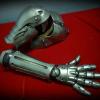I would like to expand on the DareDevil's most recent posting and add some
observations to those stated in my previous two postings on experiences with
D+Q+F.
To remind from previous posting , I will mantion that the D+Q+F successfully
cured HUMsters hypertension. There is no doubt about it.
I agree that the D+Q will not make someone young in the entirety. But will rejuventate
some aspects of aging and those are important ones.
There is a reason for that. D+Q attacks only limited subset of senescent cells. Only those
which are vulnerable to its action. And those are the endothelial senescent cells and
senescent preadipocytes.
Some of the authors mention D+Q senolytic effects in liver and muscles.
There is a reason for that, and this is (similarly to many types of cancers) the wide variety
of the the types of senescent cells. Each of them senesced due to different type of
damage to the cell.
So far I have not met any article which specifically lists all types of senescent cells, and I
think such listing is still something what will be not available for some time. Its an ongoing
area of research ....
What we know is that some of the senescent cells avoid being normally removed by
apoptosis or by immune system because they use variety of different survival strategies
to prevent it (again , not unlike cancer cells).
Thus some of the cancer medications are also senolytic,because the target cancer cells
share the same survival strategies as the senescent cells which are senolysed by those
drugs.
Continuing this line of thought, since there is no single strategy which can remove every
type of cancer so far , there is no single strategy to remove every type senescent cells.
What strikes me in experiments with D+Q in comparison with other cancer drugs tried
in HUMster is the lack of cutaneous (skin) effects. Specifically,the erlotinib, brigantinb
and everolimus attacked visible nevi and caused rash and sores on the skin while D+Q
did not at all.
For your info the nevi are loaded with senescent as well as neoplastic and cancerous
cells, and can serve as an excellent marker of the effectivenes of the intervention.
Therefore if some medication attacks them it may be because it is senolytic.....There
are many types of nevi .....they are affected differently by different type of cancer drug.
It is worth to know some dermatology to distinguish the senolytic action of drugs on the skin.
Nevi are excellent markers of the effectiveness of the therapy (oncologists are very happy
when they see rash on the skin, because it indicates the the therapy works).
Some of the bad cells types which make up nevi can be found also in other organs (eg basal
carcinoma can be found in skin forming pretty benign nevus but it is also causing deadly
cancer of the lungs). The same may be with the senescent cells.
Subsequently to skin eruptions and rashes, after healing (which could last for several months)
there was evidence of (at least in cosmetic sense,but not only) strong rejuvenating effect on
the skin of those former medications but not much change with the D+Q.
In particular the nevi and discolorations have not been affected by D+Q whatsoever.
Nevertheless , after half a year I can see that the skin is more supple....and this might
be due to better circulation of subcutaneous blood and due to regeneration of fat
tissue in the dermal layers. There is also evidence that some small wrinkles disappeared
but the bigger ones are not much affected.
Another superficial effect is the slight but noticeable increase in the hair density. Likely
due to better circulation of blood in the scalp. The degree of the increase of haiir
density is similar to the effect caused by rogaine (which also increases blood circulation)
which HUMster used in the distant past. The difference is that rogaine works only when used,
while the D+Q effects on hair growth seem to be permanent. The hair seem to be more
shiny, stronger and less grey as well.
Humster did not notice much of the effect of D+Q on the wellbeing and cognitive
measures, besides slight transient worsening over first month after dosing with subsequent
recovery to the same level as before dosing. The reason for the worsening might have been
related to the immune system upregulation for the first month after dosing and related flu
like state which steadily decreased over that period of time to disappear completely afterwards.
However , it does not mean that other humsters will not gain some cognitive positive effects
due to lowering effect of the D+Q therapy on the inflamation or even on better blood circulation
in the brain.
No pain nor other discomforts caused by the D+Q.
It is likely that I would see other markers affected by the D+Q, but, frankly say, due to previous
interventions , HUMster is running out of markers of aging.
This is unfortunate side affect of successful antiaging therapy....less and less markers to
rely on....How sad ..... 
In conclussion : D+Q is not panaceum for aging. It affects some (and very important)
aspects of aging but not all of them. It is likely that it has to be followed by other
interventions which complement its action.I think the Nav is a very good candidate for such
additive effects.....
Thank you for attention



















































